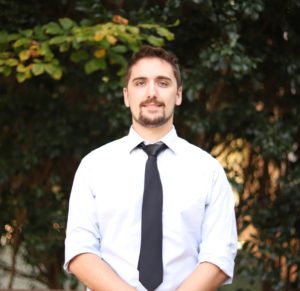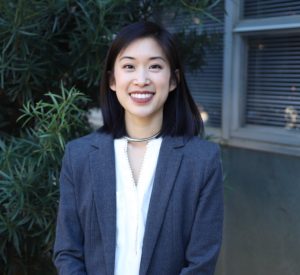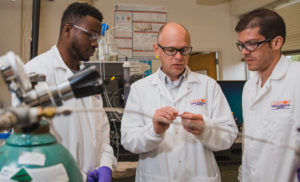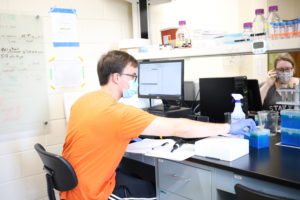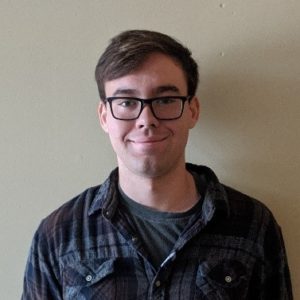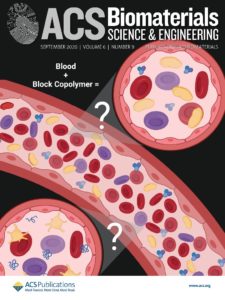The 2020 Spring semester started the same way one would remember every semester, with a mixture of new classes, familiar faces and places, and new challenges. Our department wouldn’t find out until March that those new challenges would include adjusting our teaching and learning methods in our Unit Operations lab while students and faculty were not allowed on campus.
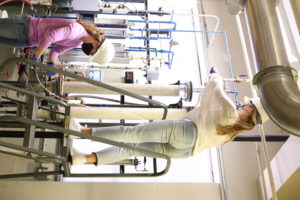
Our faculty encountered a sudden dilemma of how to finish junior Unit Operations Laboratory experiments online in place of in person. Fortunately, 2 of the 4 experiments and the walkthrough for the 3rd experiment had been completed in person. With students sent home for the rest of the semester at Spring Break, department head Dr. Bruce, department technicians Messrs. Coburn and Marcengill, and faculty coaches Drs. Norfolk, Roat, and Thies scrambled to figure out how to get students through the remaining 2 experiments and associated reports by the end of the semester, entirely remotely.
The Spring semester ended with what could best be described as triage, as last-minute adjustments to the lab schedule were forced upon us. Plans for Unit Ops in the summer semester were scrapped, and the popular Study Abroad option at The Technical University of Denmark (DTU) was also canceled. This threatened the graduation plans of several juniors and seniors, particularly Co-Op students.
As summer progressed, it became more evident that our hopes of the pandemic lessening by the Fall semester were deluded as cases continued to surge throughout the country, especially after holiday gatherings. Starting in July, Dr. Norfolk directed the development of plans for multiple contingencies, including classes entirely online again, including all Unit Operations Lab classes; hybrid classes where some students would be allowed on campus; and resumption of “normal” operations with more accommodations for students physically challenged to navigate the Unit Ops Lab spaces.
With a passion for teaching the importance of safety, especially in the Unit Operations lab, Dr. Thies wrote a letter to Provost Jones requesting in-person Unit Operations Laboratory access sooner than the planned start to on-campus classes on September 21. Dr. Thies stressed that the safety of our engineers depended not only on keeping them safe during the pandemic but also on training them to be safe engineers in the future and that the experience in the Lab was vital for their training. All faculty and staff involved in Unit Operations Labs endorsed the letter.
While we were not granted an early start, we received permission to continue with in-person experiments, with appropriate testing and PPE, even if the campus was closed before completing all experiments.
The next challenge was keeping students safe when they were in the Lab. Our standard safety protocols, suitable for happier days, would not be sufficient for pandemic conditions. Face masks are currently mandatory inside all buildings on campus (and outside, when social distancing cannot be guaranteed). We also implemented temperature checks and a self-assessment at the entrance to the Lab. Further, a touchless hand sanitizer station, dubbed FAST (Foot-Actuated Sanitizer for Tigers), was created and placed at the entrance to the Lab.
 To maintain distancing during the Lab, our traditional three- or four-person lab teams could not all go to the Lab simultaneously. Instead, groups were limited to two students in the Lab at a time, and we had a ‘shift change’ where students would change over personnel. While meeting the original intent of reducing the density of students in the Lab, this also resulted in significantly increased student engagement with the lab experiments and a new appreciation of the difficulty of writing a procedure. In the past, student participation rates varied, with certain students taking a more active role than others in their group. With the rotation of students throughout the lab period, all students had to engage actively in the lab activities. Further, they all gained an appreciation for the level of detail and planning put into a procedure that someone else, either a group member or a front-line operator, will be executing without supervision. The idea of a shift change of the student group may very well be implemented in future offerings of the Unit Ops lab course, even after the pandemic has passed.
To maintain distancing during the Lab, our traditional three- or four-person lab teams could not all go to the Lab simultaneously. Instead, groups were limited to two students in the Lab at a time, and we had a ‘shift change’ where students would change over personnel. While meeting the original intent of reducing the density of students in the Lab, this also resulted in significantly increased student engagement with the lab experiments and a new appreciation of the difficulty of writing a procedure. In the past, student participation rates varied, with certain students taking a more active role than others in their group. With the rotation of students throughout the lab period, all students had to engage actively in the lab activities. Further, they all gained an appreciation for the level of detail and planning put into a procedure that someone else, either a group member or a front-line operator, will be executing without supervision. The idea of a shift change of the student group may very well be implemented in future offerings of the Unit Ops lab course, even after the pandemic has passed.
The faculty took lessons from the Spring semester and implemented them into the plans and schedules for the Fall semester. Instead of conducting experiments throughout the semester, the faculty decided to emphasize hands-on lab activities and scheduled these topics into a short period earlier in the semester, which also had the added benefit of flexibility. As students in the course become infected or exposed to those who were, the faculty could rearrange the lab schedule, allowing for students to clear isolation and quarantine protocols and go into the Lab at a later date. This has only been possible because of the dedication of our lab technicians, Bill Coburn and Chad Marcengill, who worked nights and weekends to make sure the Unit Operations Lab experience would be everything we promised to the students.
All of these changes were important to conducting Lab in-person safely. However, the administration required all courses, including labs, to be offered to students who determined that they could not come to campus safely. Accommodating students who would never set foot in the Unit Operations Lab but still be required to write procedures, analyze results, and communicate their conclusions, became a significant effort.
At the suggestion of Dr. Bruce, there has been an extensive effort to create 3D models of each experimental apparatus available in the Unit Ops lab. A graduate student in Mechanical Engineering, Mihir Kale, as well as an undergraduate in Chemical Engineering, Matt “XV” Holmes, have created these models based on the equipment on the floor. These models allow students to virtually walk around the apparatus, trace the lines, and plan their experiments. When combined with a video of the faculty discussing the experiment and equipment (a recorded ‘walk through’ meeting), virtual students can plan and write procedures from the safety of their own home, wherever that might be. Students received support through virtual meetings with the faculty to answer questions.
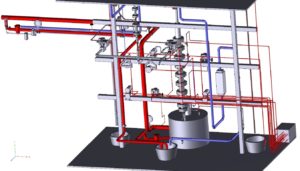
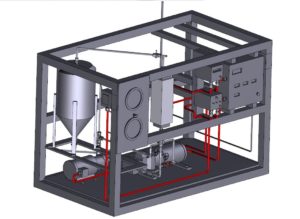
The faculty are planning a comparison study of the effectiveness of these virtual tools. Student reports, including schematics and procedures, are available for classes in the past, which had access to the equipment and in-person walkthrough meetings. We intend to compare strategies generated by students with virtual tools and those created by students with only in-person tools to determine if students were equally able to demonstrate their mastery of the learning objectives. Our working hypothesis is that there will be no statistically significant difference between these students, which would support the use of virtual tools in the learning environment. Look for our analysis in a future edition of the Journal of Chemical Engineering Education.
With all of these safeguards in place and the adherence to the guidance of the university and other health officials, there were no documented cases of community spread that occurred in the Unit Ops Lab. While the pandemic is with us, we will continue our best efforts to safely train engineers on how to work in an industrial environment safely, and we will continue to look forward to the day that the sun shines on a mask-free Clemson, again!
